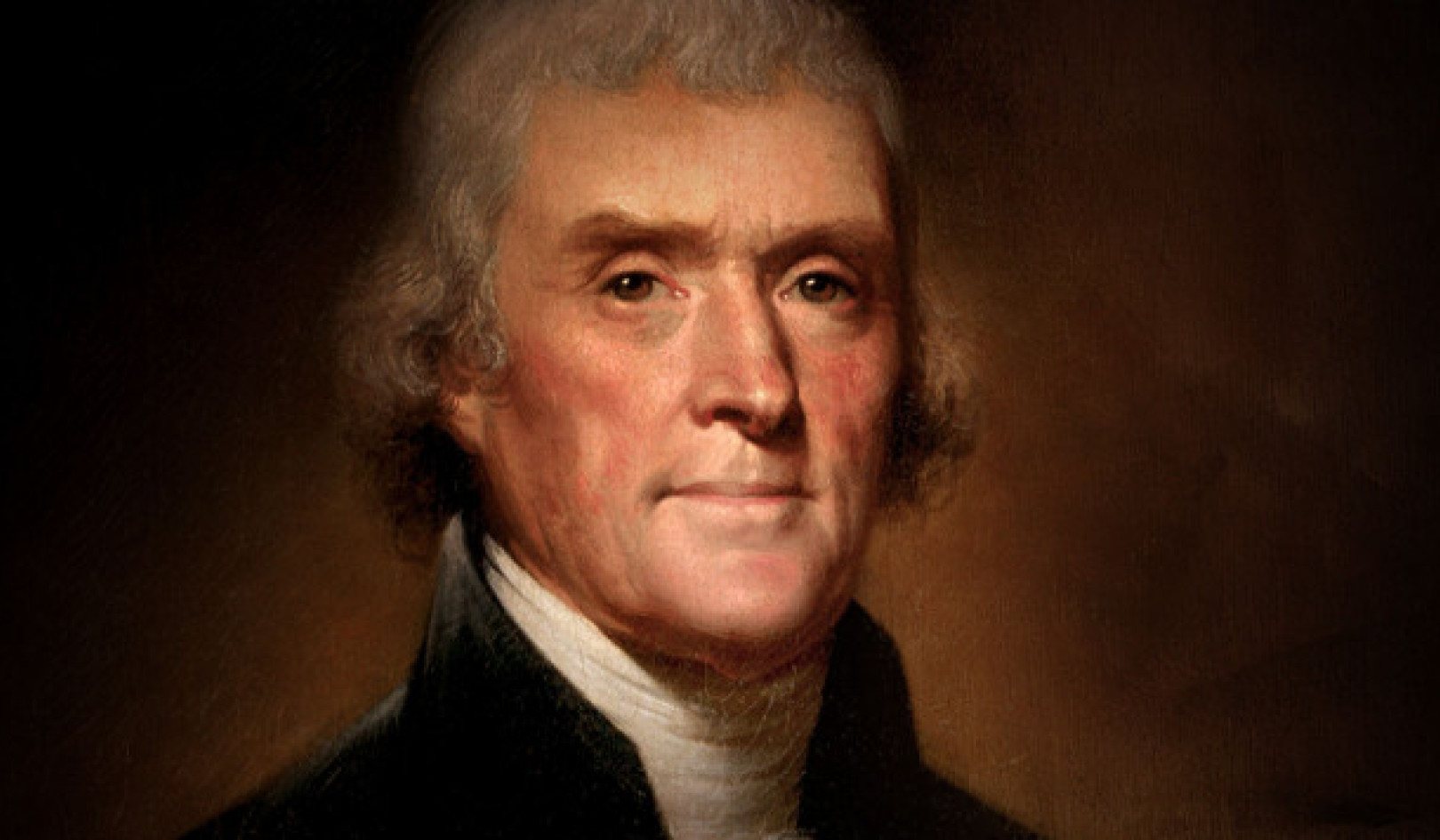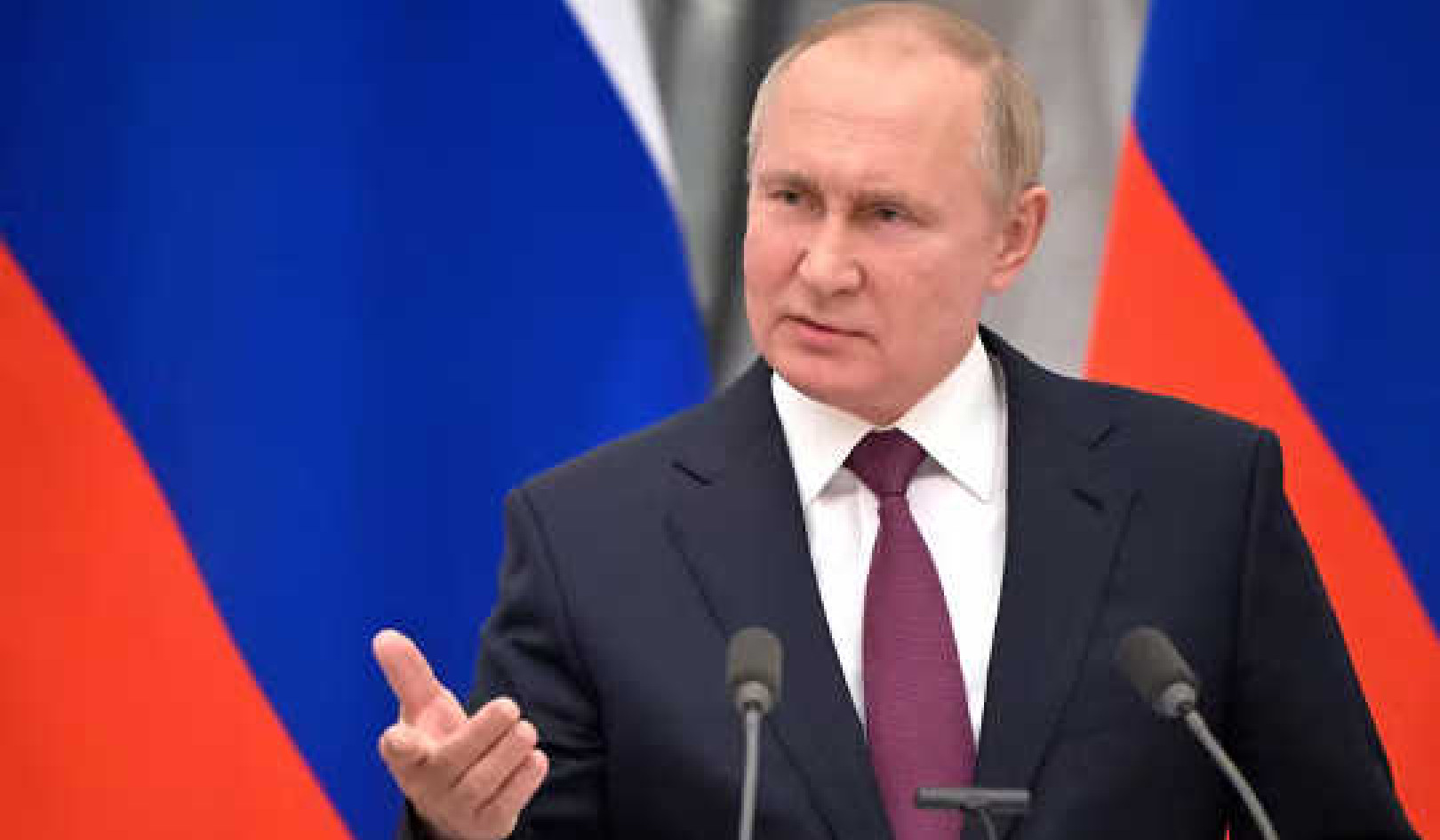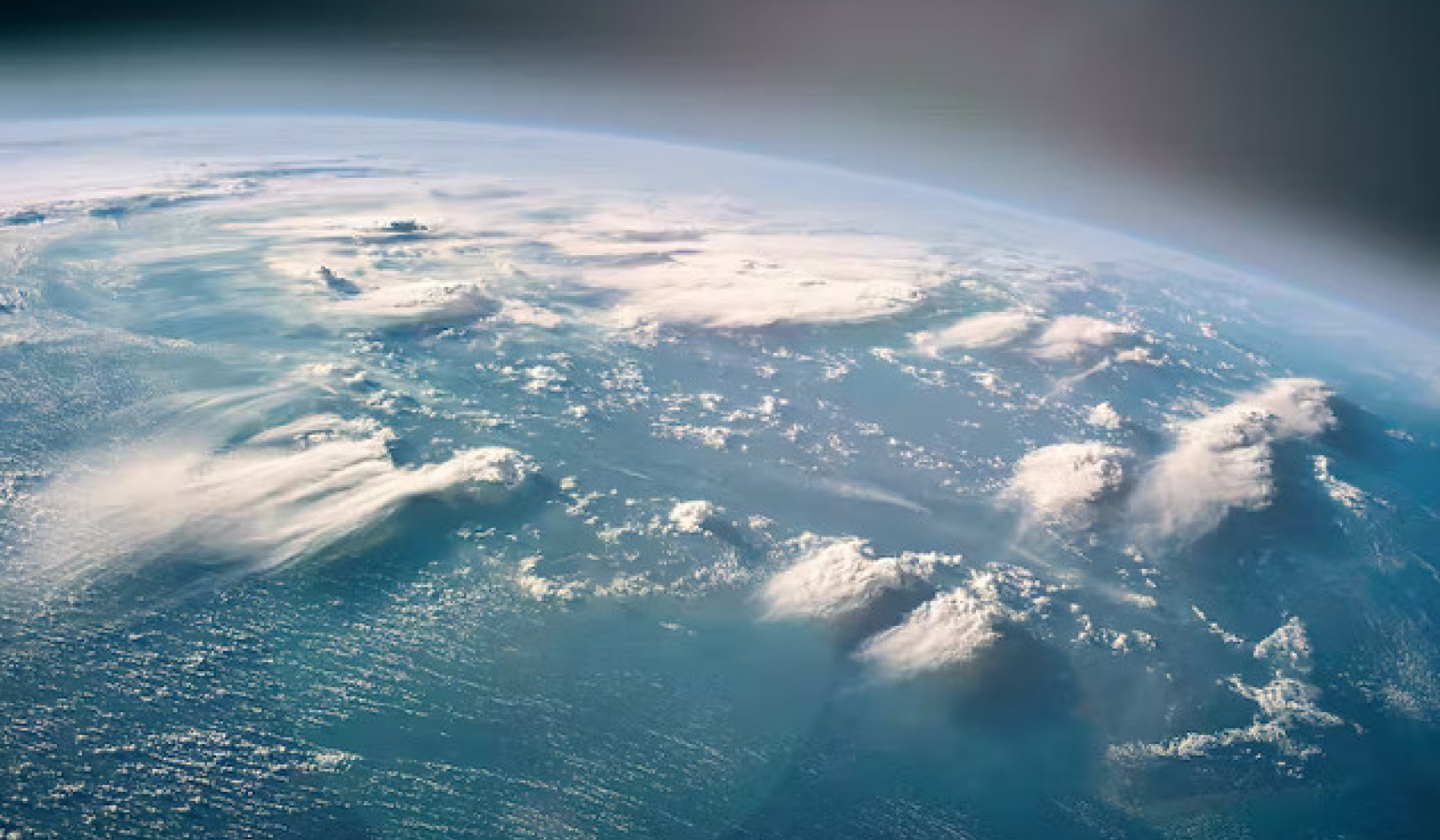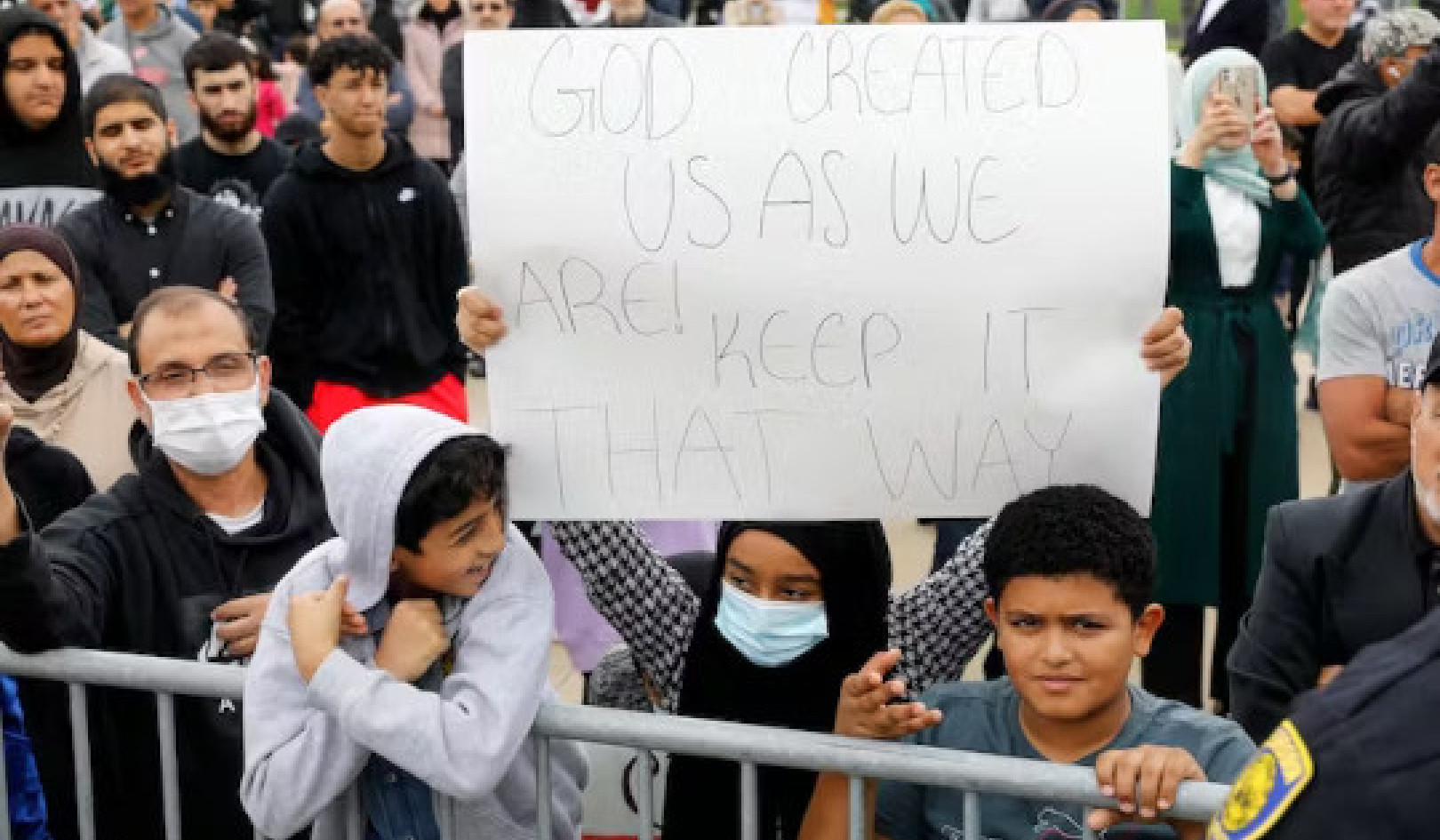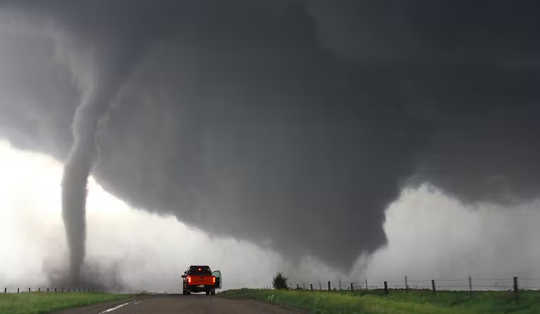
The heart of U.S. tornado activity, once Tornado Alley, has shifted eastward. Brent Koops/NOAA Weather in Focus Photo Contest 2015, CC BY-ND
Tornadoes tore up homes in New Orleans and its suburbs and were reported in communities from Texas to Mississippi and Alabama as severe storms swept across the South in late March 2022. We asked tornado scientist Ernest Agee to explain what causes tornadoes and how the center of U.S. tornado activity has shifted eastward from the traditional Tornado Alley in recent years.
What causes tornadoes?
Tornadoes start with thunderstorms. Think of the thunderstorm as the parent of the tornado. When atmospheric conditions favor the development of severe storms, tornadoes can form.
The recipe for a tornado requires a few important ingredients: low-level heat and moisture and cold air aloft, coupled with a favorable wind field that increases in speed with height, as well as changes in the wind direction in the lower levels.
The right combination of heat, moisture and wind can develop rotating thunderstorms capable of spinning off a tornado or a tornado family. Thunderstorms capable of spinning off tornadoes typically develop along and ahead of a frontal boundary – where warm and cold air masses meet – often accompanied above by a strong jet stream.
Why do tornado outbreaks seem to be getting more frequent and intense? Is climate change playing a role?
Studies do show tornadoes getting more frequent, more intense and more likely to come in swarms.
The most intense and longest-lasting tornadoes tend to come from what are known as supercells – powerful rotating thunderstorms. The December 2021 outbreak, with more than 60 tornadoes that swept across Kentucky and neighboring states, came from a supercell. The 2011 outbreak in Alabama was another.
All of this unfolds under the umbrella of global warming. While it’s still hard for climate models to assess something as small as a tornado, they do project increases in severe weather.
Forecasting tornadoes. NOAA National Severe Storms Laboratory.
What’s interesting is that despite that increase, the per capita death toll from tornadoes has actually gone down in the latter half of the past 100 years. So, as bad as these new outbreaks are, science and technology are saving lives at a faster rate than storms are killing people.
Scientists can now anticipate and forecast areas where tornadoes may develop. If you look at NOAA’s Storm Prediction Center website, you’ll see eight-day outlooks now. That’s based on scientific knowledge and technology able to target where conditions conducive to tornadoes are developing.
People also know what to do now and are more likely to get warnings, and more homes have safe rooms able to withstand a tornado. Social media also plays a big role today. A few years ago, I had a student who was on his family’s farm when he got a text warning that a tornado was coming. He and his family got to safety just before the tornado hit.
The Southeast seems to be getting a lot more severe storms. Has Tornado Alley shifted?
In 2016, my students and I published the first paper that clearly showed, statistically, the emergence of another center of tornado activity in the Southeast, centered around Alabama.
Oklahoma still has tornadoes, of course. But the statistical center has moved. Other research since then has found similar shifts.
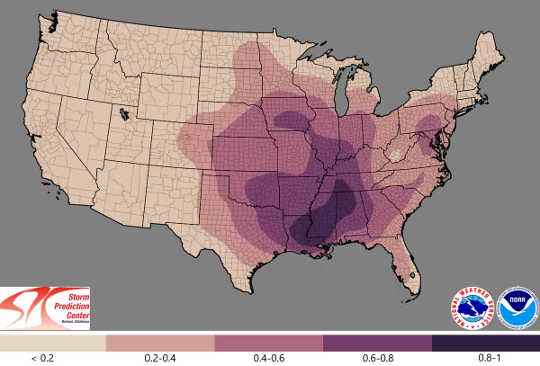
Mean number of days per year with a tornado registering EF1 strength or greater within 25 miles, 1986-2015. NOAA Storm Prediction Center
We found a notable decrease in both the total number of tornadoes and days with tornadoes in the traditional Tornado Alley in the central plains. At the same time, we found an increase in tornado numbers in what’s been dubbed Dixie Alley, extending from Mississippi through Tennessee and Kentucky into southern Indiana.
In the Great Plains, drier air in the western boundary of traditional Tornado Alley probably has something to do with the fact that tornadoes are a declining risk in Oklahoma while wildfire risk is growing.
Research by other scientists suggests that the dry line between the wetter Eastern U.S. and the drier Western U.S., historically around the 100th meridian, has shifted eastward by about 140 miles since the late 1800s. The dry line can be a boundary for convection – the rising of warm air and sinking of colder air that can fuel storms.
While scientists don’t have a full picture of the role climate change may be playing, we can certainly say we live in a warmer climate, and that a warming climate provides many of the ingredients for severe storms.
About The Author
Ernest Agee, Professor Emeritus of Atmospheric Science, Purdue University
This article is republished from The Conversation under a Creative Commons license. Read the original article.
Related Books
Life After Carbon: The Next Global Transformation of Cities
by Peter Plastrik , John Cleveland The future of our cities is not what it used to be. The modern-city model that took hold globally in the twentieth century has outlived its usefulness. It cannot solve the problems it helped to create—especially global warming. Fortunately, a new model for urban development is emerging in cities to aggressively tackle the realities of climate change. It transforms the way cities design and use physical space, generate economic wealth, consume and dispose of resources, exploit and sustain the natural ecosystems, and prepare for the future. Available On Amazon
The future of our cities is not what it used to be. The modern-city model that took hold globally in the twentieth century has outlived its usefulness. It cannot solve the problems it helped to create—especially global warming. Fortunately, a new model for urban development is emerging in cities to aggressively tackle the realities of climate change. It transforms the way cities design and use physical space, generate economic wealth, consume and dispose of resources, exploit and sustain the natural ecosystems, and prepare for the future. Available On Amazon
The Sixth Extinction: An Unnatural History
by Elizabeth Kolbert Over the last half-billion years, there have been Five mass extinctions, when the diversity of life on earth suddenly and dramatically contracted. Scientists around the world are currently monitoring the sixth extinction, predicted to be the most devastating extinction event since the asteroid impact that wiped out the dinosaurs. This time around, the cataclysm is us. In prose that is at once frank, entertaining, and deeply informed, New Yorker writer Elizabeth Kolbert tells us why and how human beings have altered life on the planet in a way no species has before. Interweaving research in half a dozen disciplines, descriptions of the fascinating species that have already been lost, and the history of extinction as a concept, Kolbert provides a moving and comprehensive account of the disappearances occurring before our very eyes. She shows that the sixth extinction is likely to be mankind's most lasting legacy, compelling us to rethink the fundamental question of what it means to be human. Available On Amazon
Over the last half-billion years, there have been Five mass extinctions, when the diversity of life on earth suddenly and dramatically contracted. Scientists around the world are currently monitoring the sixth extinction, predicted to be the most devastating extinction event since the asteroid impact that wiped out the dinosaurs. This time around, the cataclysm is us. In prose that is at once frank, entertaining, and deeply informed, New Yorker writer Elizabeth Kolbert tells us why and how human beings have altered life on the planet in a way no species has before. Interweaving research in half a dozen disciplines, descriptions of the fascinating species that have already been lost, and the history of extinction as a concept, Kolbert provides a moving and comprehensive account of the disappearances occurring before our very eyes. She shows that the sixth extinction is likely to be mankind's most lasting legacy, compelling us to rethink the fundamental question of what it means to be human. Available On Amazon
Climate Wars: The Fight for Survival as the World Overheats
by Gwynne Dyer Waves of climate refugees. Dozens of failed states. All-out war. From one of the world’s great geopolitical analysts comes a terrifying glimpse of the strategic realities of the near future, when climate change drives the world’s powers towards the cut-throat politics of survival. Prescient and unflinching, Climate Wars will be one of the most important books of the coming years. Read it and find out what we’re heading for. Available On Amazon
Waves of climate refugees. Dozens of failed states. All-out war. From one of the world’s great geopolitical analysts comes a terrifying glimpse of the strategic realities of the near future, when climate change drives the world’s powers towards the cut-throat politics of survival. Prescient and unflinching, Climate Wars will be one of the most important books of the coming years. Read it and find out what we’re heading for. Available On Amazon
From The Publisher:
Purchases on Amazon go to defray the cost of bringing you InnerSelf.comelf.com, MightyNatural.com, and ClimateImpactNews.com at no cost and without advertisers that track your browsing habits. Even if you click on a link but don't buy these selected products, anything else you buy in that same visit on Amazon pays us a small commission. There is no additional cost to you, so please contribute to the effort. You can also use this link to use to Amazon at any time so you can help support our efforts.


















